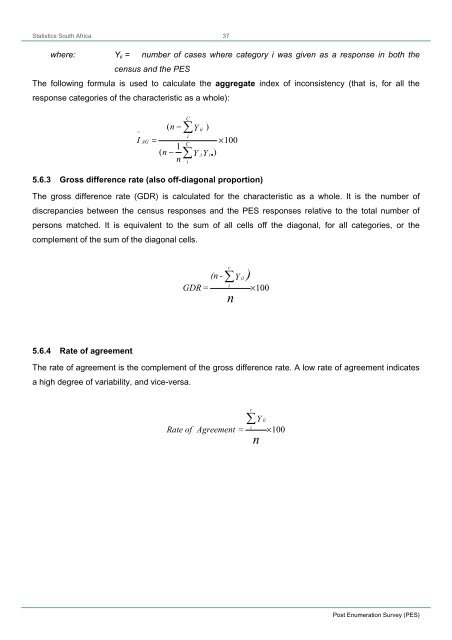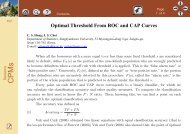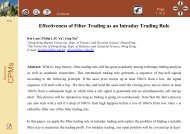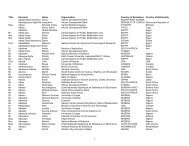Post-enumeration Survey (PES) - Statistics South Africa
Post-enumeration Survey (PES) - Statistics South Africa
Post-enumeration Survey (PES) - Statistics South Africa
You also want an ePaper? Increase the reach of your titles
YUMPU automatically turns print PDFs into web optimized ePapers that Google loves.
<strong>Statistics</strong> <strong>South</strong> <strong>Africa</strong><br />
37<br />
where: Y ii = number of cases where category i was given as a response in both the<br />
census and the <strong>PES</strong><br />
The following formula is used to calculate the aggregate index of inconsistency (that is, for all the<br />
response categories of the characteristic as a whole):<br />
^<br />
I<br />
AG<br />
( n −<br />
=<br />
1<br />
( n −<br />
n<br />
C<br />
∑<br />
i<br />
C<br />
∑<br />
i<br />
Y ii )<br />
× 100<br />
Y . iY<br />
i•<br />
)<br />
5.6.3 Gross difference rate (also off-diagonal proportion)<br />
The gross difference rate (GDR) is calculated for the characteristic as a whole. It is the number of<br />
discrepancies between the census responses and the <strong>PES</strong> responses relative to the total number of<br />
persons matched. It is equivalent to the sum of all cells off the diagonal, for all categories, or the<br />
complement of the sum of the diagonal cells.<br />
(n -<br />
GDR =<br />
c<br />
∑<br />
i<br />
n<br />
Y<br />
ii<br />
)<br />
×100<br />
5.6.4 Rate of agreement<br />
The rate of agreement is the complement of the gross difference rate. A low rate of agreement indicates<br />
a high degree of variability, and vice-versa.<br />
Rate of<br />
Agreement =<br />
c<br />
∑<br />
i<br />
Y<br />
n<br />
ii<br />
×100<br />
<strong>Post</strong> Enumeration <strong>Survey</strong> (<strong>PES</strong>)















